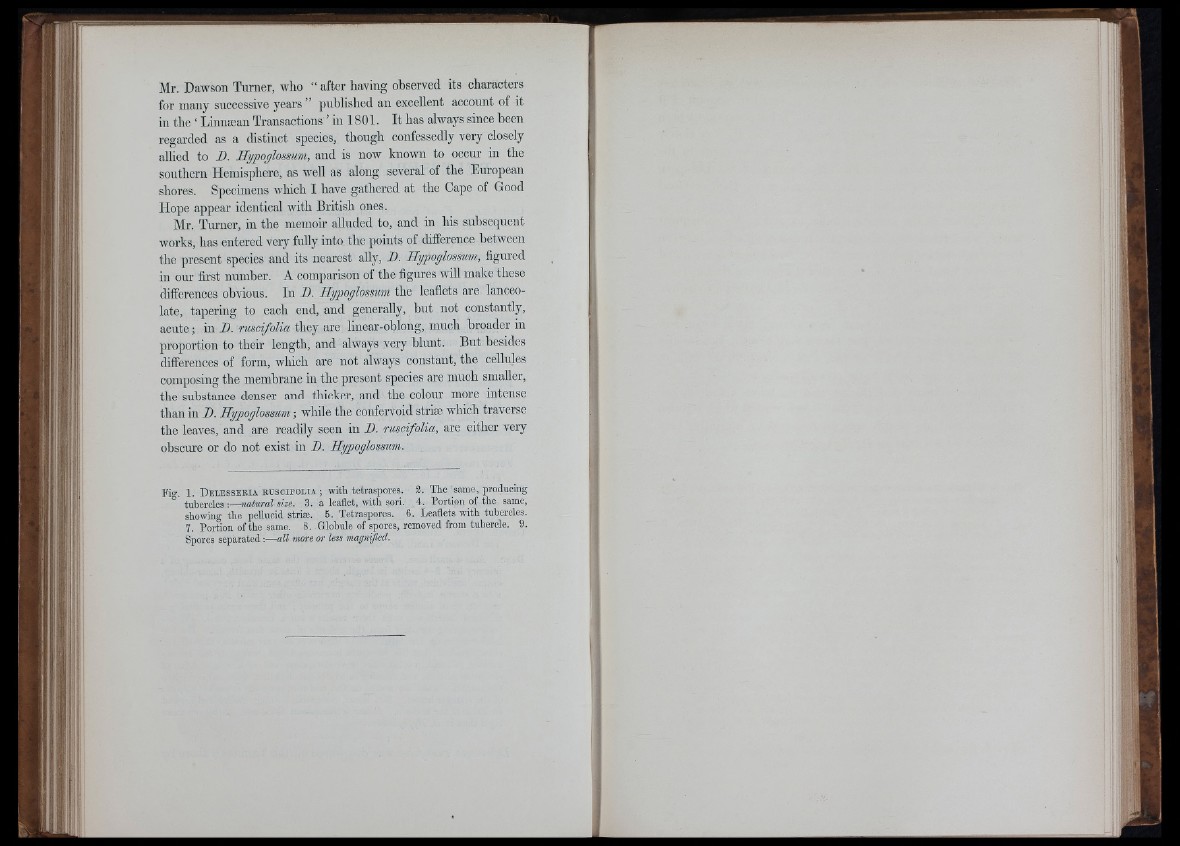
i i î ’!■
Mr. Dawson Turner, who “ after having observed its characters
for many successive years ” published an excellent account of it
in the ‘ Linnæan Transactions ’ in 1801. It has always since been
regarded as a distinct species, though confessedly very closely
allied to D. Hypoglossum, and is now known to occur in the
southern Hemisphere, as well as along several of the European
shores. Specimens which I have gathered at the Cape of Good
Hope appear identical with British ones.
Mr. Turner, in the memoir alluded to, and in his subsequent
works, has entered very fully into the points of difference between
tlie present species and its nearest ally, D. Hypoglossum, figured
in our first number. A comparison of the figures will make these
differences obvious. In D. Hypoglossum the leaflets are lanceolate,
tapering to each end, and generally, but not constantly,
acute ; in D. ruscifolia they are linear-ohlong, much broader in
proportion to their length, and always very blunt. But besides
différences of form, which are not always constant, the cellules
composing the membrane in the present species are much smaller,
the substance denser and thicker, and the colour more intense
than in D. Hypoglossum -, while the confervoid striæ which traverse
the leaves, and are readily seen in D. ruscifolia, are either very
obscure or do not exist in D. Hypoglossum.
'
Fin-. 1 . D e l e s s e r ia r u s c if o l ia ; with tetraspores. 3 . The same, producing
° tubercles -.— natural size. 3. a leaflet, with sori. 4 . Portion of the same,
showing the pellucid striæ. 6. Tetraspores. 6. Leaflets with tubercles.
7. Portion of the same. 8. Globule of spores, removed from tubercle. 9.
Spores separated :— all more or It
n:
' :
' ;T'
'i